

|
Soundclip:
|
| See Neff Irizarry's Gracinha Solo Transcription |
|
Steve
Khan's
Solo Transcription: 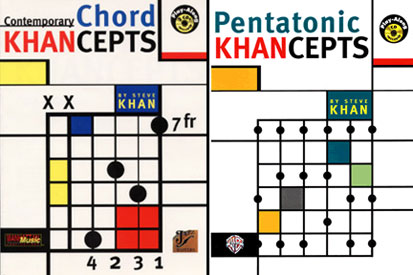 even come with CDs. Maybe all of the recorded music is offered as a download? When it was time to record the music, I was very lucky to have been able to have prepared it all with the help of Al Gorgoni and his then Lightstream Studios in lower Manhattan. Al and I were greatly aided by the computer sequencing talents of his beloved son, Adam Gorgoni. Without them, and the brilliance of engineer Malcolm Pollack, none of this would have happened, and certainly not with this kind of audio quality. You must remember that this was all done, at least I think so, before the advent of digital recording programs like Pro Tools, Logic Audio or Digital Performer. Looking back, it's amazing to me that we got this done. even come with CDs. Maybe all of the recorded music is offered as a download? When it was time to record the music, I was very lucky to have been able to have prepared it all with the help of Al Gorgoni and his then Lightstream Studios in lower Manhattan. Al and I were greatly aided by the computer sequencing talents of his beloved son, Adam Gorgoni. Without them, and the brilliance of engineer Malcolm Pollack, none of this would have happened, and certainly not with this kind of audio quality. You must remember that this was all done, at least I think so, before the advent of digital recording programs like Pro Tools, Logic Audio or Digital Performer. Looking back, it's amazing to me that we got this done.As the publication date neared, I knew that I wanted to feature, what I have been calling, some improvised performances to try to put these "Khancepts" into reality by blending all of the chordal ideas with improvised lines. They would be examples of how I really play - even if I was only playing to the sequenced tracks. These performances all ended-up on CD #2, or as I had always referred to it as the "RED CD"! In order to better distinguish one CD from the other, we gave each CD a color, and so, CD #1 became the "BLUE CD." As virtually all of the music had a decidedly Latin feel to it, I wanted to use familiar grooves and chord progressions that were simple and would allow my playing to just flow. As I performed these examples, I had no idea that I was actually laying the foundation for what would eventually become the 2nd book in this series, "PENTATONIC KHANCEPTS"(2002). After the initial book was published, I was busy recording "GOT MY MENTAL"(Evidence), and then, I did not record again as a leader for almost 10 years. That was NOT by design! It was all simple, as no one wanted to record me, period. But, these book performances, over time, started to cause me to think that, perhaps, THIS was actually more representative of the way that I actually play than what had appeared on some of my own recordings. Strange to admit this, but that's how I had been feeling. Two of these improvised performances: "Sliceville" (a 12-bar Bb blues) and "Gracinha" (a ii-V-I-VI7 turnaround) years later would become actual fully realized compositions. "Sliceville" was eventually presented as "Change Agent" appearing on "PARTING SHOT"(Tone Center)(2011). 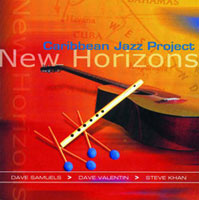 "Gracinha" was to reappear, born again as "Charanga Sí, Sí" on the "NEW HORIZONS"(Concord Picante)(2000) album by the Caribbean Jazz Project, where I had become a co-leader alongside two fantastic musicians Dave Samuels(vibes/marimba) and Dave Valentín(flute), both of whom have sadly recently left us. I don't know that I even fully understand how or why it turned out this way, but "Gracinha" has become one of my favorite all-time performances, because it exhibits something that one doesn't always capture when recording an actual album. I remember, at least a little bit of it, just sitting in the studio, by myself, imagining that I'm playing with a band, a conjunto, and there was Malcolm Pollack on the other side of the glass. He pushed 'record' and off we went, and the result is what you now hear. "Gracinha" was to reappear, born again as "Charanga Sí, Sí" on the "NEW HORIZONS"(Concord Picante)(2000) album by the Caribbean Jazz Project, where I had become a co-leader alongside two fantastic musicians Dave Samuels(vibes/marimba) and Dave Valentín(flute), both of whom have sadly recently left us. I don't know that I even fully understand how or why it turned out this way, but "Gracinha" has become one of my favorite all-time performances, because it exhibits something that one doesn't always capture when recording an actual album. I remember, at least a little bit of it, just sitting in the studio, by myself, imagining that I'm playing with a band, a conjunto, and there was Malcolm Pollack on the other side of the glass. He pushed 'record' and off we went, and the result is what you now hear.I should note that the soundclip that you will hear of "Gracinha" has been enhanced a bit, percussively speaking, because in the ensuing 25 years, I have fortunately acquired some degree of facility with Pro Tools, and can add instruments, and sometimes ambience, to existing 2-trk. mixes without it being too noticeable. When the original track was programmed, I just did not have the knowledge or the skills to create a really good conga pattern, nor most of the other Latin percussion - when I listen now, that aspect is pretty embarrassing. So, I decided to add in a few elements: a campana, which joins the track about midway through. Some timbal avanicos to propel the piece forward and give a sense of 'sections' - even if there are none. Some additional crash cymbals were added for color as well. Oh, and at the top, during the chordal exposition, I added in a nice layer of string pads for some texture. With "Gracinha," I wanted to provide an example of what one might play, or could play over one of the most basic and important chord progressions in our music, that being any form of a a turnaround - usually I-VI-ii-V and resolving back to I. Here however, I put to use a variation of that idea, and I created something in Bb, but beginning on the iim7 chord of Cm7. So, in cut-time, it looks something like this: | Bbmaj7 / / / | / / / / | Bbmaj7 / / / | G7(alt.) / / / :|| Just how did we arrive here? It is simply because guitarist Neff Irizarry, one of my students during a brief artist-in-residence tenure at the prestigious Berklee College of Music in Boston during early 1994, was having his first book published. While at Berklee, I was presented with all of their best guitar students at that time, and believe me, they were incredible - very knowledgeable in every way, talented, technically gifted, you name it. After the first class, I was so depressed because I felt defeated, I felt that there was absolutely nothing that I could show to any of them - nothing that would interest them. Within that group of 10-12 students, Neff was really the only one that showed any genuine interest in what I had been doing in my career, he was the only one who seemed to know something about many of the older recordings. 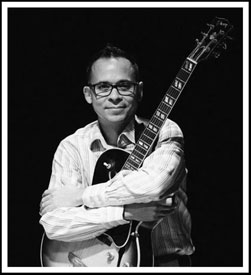 It was easy for me to be helpful to him during that time. The years have proven that my feelings of great self-doubt were a bit overblown as I have stayed in touch with many of these great players. Neff was the only one of them, if memory serves, who was from the USA. Everyone else was from Europe or Japan. Some of these players have gone on to have distinguished careers in their own countries, for example: Paul Pesonen(Sweden); Peter Nylander(Sweden); Martin Koller(Austria); Ben Butler(Australia) and Philipp van Endert(Germany). As Neff is of Puerto Rican descent, his interest in Latin music and the guitar was always completely sincere. Not too long ago, he decided to pursue getting his Masters degree, with his thesis being devoted to what has now become his book, "CONTEMPORARY LATIN JAZZ GUITAR"(Sher Music Co.). It is a most serious and scholarly work, and that is undeniable! He should be heartily congratulated for seeing this project all the way through to publication. It was easy for me to be helpful to him during that time. The years have proven that my feelings of great self-doubt were a bit overblown as I have stayed in touch with many of these great players. Neff was the only one of them, if memory serves, who was from the USA. Everyone else was from Europe or Japan. Some of these players have gone on to have distinguished careers in their own countries, for example: Paul Pesonen(Sweden); Peter Nylander(Sweden); Martin Koller(Austria); Ben Butler(Australia) and Philipp van Endert(Germany). As Neff is of Puerto Rican descent, his interest in Latin music and the guitar was always completely sincere. Not too long ago, he decided to pursue getting his Masters degree, with his thesis being devoted to what has now become his book, "CONTEMPORARY LATIN JAZZ GUITAR"(Sher Music Co.). It is a most serious and scholarly work, and that is undeniable! He should be heartily congratulated for seeing this project all the way through to publication.He wanted to present a solo of mine within the book, and I suggested that he do "Gracinha," because I had never transcribed it, and had no plans to do so. But more than that, this performance embodied so much of everything that I have tried to do with my playing and my recordings. Beyond that suggestion, I really did not want to get involved too much. But, when Neff sent me a pdf of a draft of an early transcription, I had to actually go through it all and make some corrections and suggestions. Please understand that he had done a great job! But sometimes, when transcribing we can hit a crossroad, especially rhythmically, because solos are improvised - and by their very nature, are not intended to be perfect. I tried to impress upon Neff my own guiding principle about transcribing, which is this: When you arrive at a phrase or a passage that does not seem to conform to any particular rhythm or metronomic sense of time - you have to discard all of those older ideas about being so 'accurate' and simply ask yourself, "What do I think that the player was trying to play?" The answer to that question usually lies within some very basic and known rhythms - and so, that is what you should notate. In this solo, there were a couple of brief gray areas, and I had to guide Neff in this aforementioned direction. In the end, it is a really terrific representation of what I happened to play on that day some 25+ years ago. The key point in approaching this chord progression is to view the changes and the bar lines as being elastic and flexible - they are not to be seen as rigid at all. When playing, I just let my imagination take over - for better or worse - and as my analysis will try to point out, you will find that there were moments when I was anticipating the arrival of a chord change, and even getting there after the chord had actually arrived. In an elastic setting like this, it's all possible. With real players, playing in a conversational style, it is just as easy to do this, because everyone is listening to each other and the music always breaths that way. So, let us begin, and please note that I am going to refer to various moments within Neff's transcription with bar numbers, as episodes, there really are no specific sections or markers for those sections - it is just one long piece or performance. Within "CHORD KHANCEPTS," I tried to bring home a couple of ideas that had become fundamental for me. First was that if one is playing a chordal passage, those chords are never just a bunch of chords, the top voice in each chord has the same melodic weight as any note in a single-note line. Once you accept this as so, your voice leading becomes more organic and musical. A couple of disciplines that I stressed were: [1] trying to maintain the same top note for an entire sequence of chords. And when you felt that you could do this in any situation, [2] try to have that top voice ascending or descending chromatically through the changes wherever that was possible. With "Gracinha," though I had nothing written out beforehand, I wanted to begin the piece by setting a mood with this particular Charanga-style rhythm, à la José Fajardo's "La Charanga," and doing it for a period of time with an ascending sequence of lush chords beginning with G-natural on top of Cm7. For the next 6 bars, everything ascended chromatically, but when Bb arrived, and the next chord was Cm7 again, I felt that it was a little too early to employ the #7(maj7th) over a minor chord, and so, I simply kept Bb on top. Then, I returned to the ascending chromatic ideas. When I finally arrived at having F-natural on top in bar 21, 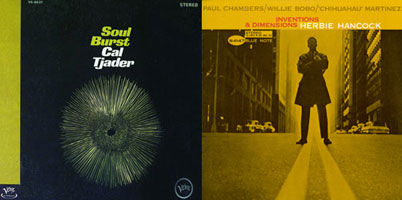 I then tried to keep that same F-natural on top through all of the chords. When this section had run its 32-bar course, I was ready to explore the single-note line dimension for a time. I then tried to keep that same F-natural on top through all of the chords. When this section had run its 32-bar course, I was ready to explore the single-note line dimension for a time.In the early '70s, after having arrived in New York and quickly finding out the hard way, that there was just so much more to know, so much more to learn - so much more hard work to do - that work was to continue - and actually, it continues right to the present. But, back then, in addition to trying to master the traditional, I was trying to explore other ways to develop line configurations that were not so modal oriented, so scale or arpeggio oriented either. But I still wanted to be within the idiom, speaking the language, and correctly. That involves so many things, and in the end, one's playing, over time, becomes an amalgam of everything that they ever heard and allowed to influence them, and even on the most cosmic level, a representation of every person who has ever entered your life. Everything is there. When you are playing, you just want to be in the flow of that music and with your bandmates. That's it. You don't say to yourself, "I'm going to play this way, or that way, or in this style or that style." You just play! You try to keep your mind, the cerebral process, out of it. Just play! As I searched for new ideas, the piano became more of the guiding force or light than the guitar - much more! The three or four most important players were McCoy Tyner, Chick Corea, Herbie Hancock and organist Larry Young. In McCoy's playing, after years of listening and study, I heard that he was basically using two pentatonics: the minor pentatonic [R, m3rd, 4th, 5th, 7th] and what I came to call, the dominant 7th pentatonic [R, 2nd, 3rd, 5th, 7th]. The levels of sophistication that one can develop with just these options is incredible as you can hear in almost any Tyner performance. But, the album that brought everything home for me was Cal Tjader's "SOUL BURST"(Verve) album from 1966, which featured a very young Chick Corea. The way he played on that album, and approached Latin music, opened the doors to everything for me. Much the same way that Herbie Hancock's playing and concepts did when I heard his tune "Succotash" which appears on "INVENTIONS & DIMENSIONS"(Blue Note), from 1963. For me, the idea became superimposing various pentatonic structures, usually only the two aforementioned ones over all of the basic chord families: major, minor, dominant, altered dominant, and m7b5. So, let's explore what I played from a linear perspective beginning at bar 33 on Pg. 2. As I began to play, I was putting to use one of the most basic ideas from the "PENTATONIC KHANCEPTS" book when playing over any ii-V-I. So, over Cm7, I was simply playing G minor pentatonic [G, Bb(7th), C, D(9th), F(11th)], which gives you the 7th, 9th and 11th without much effort at all. Over the F7(alt.) chord, I applied Ab minor pentatonic [Ab(#9), Cb(b5), Db(#5), Eb, Gb(b9)] using that minor pentatonic built upon the #9 degree, and giving you all of the altered tones. Finally, when we resolve to the Imaj7 chord, Bbmaj7, I am using D minor pentatonic [D, F, G(6th), A(maj7th), C(9th)] which, built from the 3rd, which gives you the most fundamental color tones. In bars 7-8, over the G7(alt.) chord, I moved away from a strictly pentatonic approach and applied a very traditional arpeggio vault up a 7b9 formation. In bars 41-42, this time over the Cm7, I employed a bit of chromaticism, which for some might resemble aspects of the blues scale, which is, of course, so close to any minor pentatonic scale. In bars 43-44, the Ab minor pentatonic reappears. Over the Bbmaj7, D minor pentatonic is there with the lines reconfigured. Finally, over the G7(alt.) chord, I played within that sonority, even if the bass was not there. In bar 47, and here I am applying modal ideas that either resemble Ab Dorian or Db Mixolydian [Db, Eb, F, Gb, Ab, Bb, Cb], either way, the notes are the same, and I have added in some chromaticism. Notice that in bar 48 the little 8th-note/2 16th-notes grouping on beat 2. This is a most fundamental Jazz phrasing technique that should always appear somewhere, IF one is speaking the language correctly. As the solo moves along and we've arrived at bar 49, that same phrasing ornament appears in that bar, now over Cm7 with the line being more modal, reflecting C Dorian[C, D, Eb, F, G, A, Bb] with the appropriate chromaticism. Over F7, I am essentially using F altered dominant [F, Gb, Ab, A, B, C#, Eb]. in bar 50, anticipating the arrival of the F7 chord, notice the slippery-slidey gliss approaching the A-natural and coming back down from it. These little gestures are also so important to speaking the language, and are much more saxophonistic or trumpet-like than average 'guitar stuff.' In bar 56, notice the little descending sweep during beat 2 that begins on the #9(Bb), and then essentially outlines an Ab minor triad [Ab(b9), Eb(#5), Cb(3rd)] covering many of the important altered tones. In bar 59, after having ascended via C Dorian with chromaticism, I begin a descent, but here I am applying for just one bar, F# Dorian [F#, G#, A, B, C#, D#, E] with chromatic passing tones to eventually find my way to F altered dominant in order to more gracefully resolve to Bbmaj7. 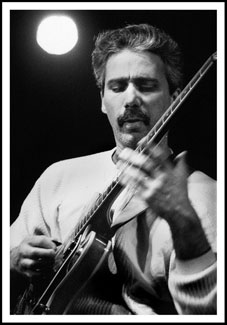 That resolution happens in bar 61, and there, with a couple of double-stops thrown in, I am using the kind of phrase that I always used to hear Willie Bobo's great guitarist Sonny Henry employ on various tunes. One example might be "Elation" from the "SPANISH GREASE"(Verve)(1965) album. These little pieces of acquired knowledge from the genre just slip out now and again, and that's a good thing! That resolution happens in bar 61, and there, with a couple of double-stops thrown in, I am using the kind of phrase that I always used to hear Willie Bobo's great guitarist Sonny Henry employ on various tunes. One example might be "Elation" from the "SPANISH GREASE"(Verve)(1965) album. These little pieces of acquired knowledge from the genre just slip out now and again, and that's a good thing!At bar 65, over the Cm7, we're still in a chromatic C Dorian area, but this time as we hit bar 66, I am creating an early arrival to F7, across the bar lines, as I allude to F7(13b9) via a D triad (F#/Gb-D-A) before returning to being more diatonic and playing C Dorian with chromaticism over the F7. Over the Bbmaj7, I'm still using D minor pentatonic, but again, I am blurring the bar lines, by playing over the G7(alt.) a bar early, and using Db dominant 7th pentatonic [Db, Eb, F, Ab, Cb] with chromaticism, all bringing me back to Cm7 at bar 75. Here I am using a doubled-note effect with alternate fingerings on the note G-natural, which is, in its way, very saxophonistic. The chordal punctuations that you see and hear are all derived from the way that Chick Corea was playing Latin music on "SOUL BURST." The resolution to Bbmaj7 brings a nice chordal arpeggio with the color tones of the 6th and 9th. Once again, anticipating the coming G7(alt.), I am approaching it from a b5 substitute angle, employing Ab Dorian [Ab, Bb, Cb, Db, Eb, F, Gb] over what would be Db7, always with some degree of Jazz-related chromaticism. As the chord progression loop continues, this entire passage becomes one of the more lyrical moments during the entire solo. When you're playing to a pre-recorded track - nothing is going to move, nothing is going to react or respond musically to what you have played - so, in that sense, you are all alone - and one doesn't tend to breath as much as one would playing live with real players. That's not an excuse, just a perception of that reality. Over the F7(alt.) area, this time I am applying that same Db dominant 7th pentatonic approach but to F7. When you use the dominant 7th pentatonic built upon the #5(C#/Db), you automatically get these altered tones: #5(Db/C#)-#9(Ab)-b5(Cb/B). The great thing here, if you look closely at bar 85 where Bbmaj7 has arrived, is that I am still playing through it using this altered substitution until the line finally resolves itself in the 2nd bar of the phrase on a D-natural, the 3rd of the actual chord. In bar 88, on the G7(alt.) chord, I am using Bb minor pentatonic [Bb, Db, Eb, F, Ab] and, having mentioned this before relative to F7(alt.), I am playing the minor pentatonic built upon the #9, as it produces all of the altered tones. With all of these pentatonics, what they are doing for your linear style is giving your lines much more of an angular sensibility, thus breaking away from the rather up-and-down linear approach using modal chromaticism. For me, this was exactly what I had been searching for as a balance in my own playing. If I might take a momentary detour, though very much related to everything discussed here, often times young players refer to something in a line configuration that they are not used to or accustomed to hearing as being "outside." But, in my view, that's really not true in most cases. If something sounds good to you, or to a listener, there is usually some basis in solid music/harmonic theory that can explain why it might have sounded good. At least, that's what I have found to be true over all of these years - one never stops being a student, NEVER! Some of this requires having a harmonic imagination that ends-up getting played-out through your lines. So, if I was take the very same 8-bar turnaround chord progression and re-envision it with lots of V7 of V7 substitutions and/or b5 substitutions fully realized as ii-Vs, it might look something like what I have laid out below. This simple chart might explain many of the things that you heard me playing instinctively without any planning. Perhaps, looking at the very first chord, you might be asking yourself: "If the basic change is Cm7, how can you possibly suddenly be playing it as C7 or C7(alt.)? With just a bass for accompaniment, or even with a keyboard in there, you can do such things if your imagination is broad enough. Theoretically, all that I am doing is going from what once was a ll-V and making a II7-V7 - in other words, that same ii chord has become a V7 to the V7. That is all it is. The rest of the suggested 'changes' - even with enharmonic spellings of the notes should follow from what I have previously stated here. I hope that you find this to be helpful. | Bbmaj7 / / / | / / Ebm7 Ab7 | G7 / / / | G7(alt.) / Abm7 Db7 :|| Even though Cm7 has arrived in bar 89 via the bass, the line does not go consonant until beat 3. However, in bar 90, I am employing a descending sequence involving both Db dominant 7th pentatonic and B dominant 7th pentatonic [B, C#/Db, D#/Eb, F#/Gb, A]. When you apply a dominant 7th pentatonic built upon the b5(B-natural) relative to F7, you are producing 3 of the altered notes: b5(B)-#5(C#)-b9(Gb). This gives you a slightly different flavor than the dominant 7th pentatonic built upon the #5. These linear ideas were direct extracts from the brilliant playing of McCoy Tyner. In bar 92, I anticipate the arrival of Bbmaj7 by playing notes in that scale or mode, Bb major/Bb Ionian [Bb, C, D, Eb, F, G, A], before tailing-off into D minor pentatonic. In bar 96, over the G7(alt.), the key point was to emphasize the #9 by landing on Bb just before beat 3. Then, at the tail end of bar 97, I pick right back up, using that same Bb, and play through the entire 4 bars simply using C Dorian, a very diatonic approach, but this is often where your most melodic nature can excel. In bar 101, I take a rather sideways detour not truly arriving at a resolution to Bbmaj7 until the 3rd bar of the phrase, bar 103, where I am again using D minor pentatonic. To get there, in bar 101 I ascended through a B dominant 7th pentatonic and back down via D# minor pentatonic [D#, F#, G#, A#, C#] - it is after all built upon the 3rd of Bmaj7 - and this is only playing a 1/2-step above where you are headed - a common device to create the necessary tension to be eventually resolved. When you are in the flow of the music, I see this as letting the line play you, and not the other way around! In bar 105, as Cm7 returns, I am taking a very simple modally chromatic approach through the entire 4 bars, with a nice Jazz phrasing linear device in bars 107-108. This involves a quick sweep down a Cm7 arpeggio [Bb-G-Eb-C] leading to a chromatically descending line: C-B-Bb-A - a most traditional device, especially in Latin music over minor chords. In bar 109, over what should have been Bbmaj7, I am delaying the resolution by continuing to play over F7(alt.), but getting into Bb major by beat 3 of that bar. At the end of bar 110, I am already in the area of G7(alt.), but notice how, at the mid-point of bar 112, I am leading us back to Cm7. The effect of all of this, the blurring of the bar lines and the harmonies, is to make everything feel more pliable, and that the player is in control of where things are, and where they might go. At the end of bar 114, notice how I pass through yet another linear sequential idea using a line from C Dorian, going down a 1/2-step through B Dorian [B, C#, D, E, F#, G#, A], but the target note of all of this activity is to somehow arrive at an A-natural, the maj7th, on beat 1 of bar 117. This is when Bbmaj7 arrives and we finally have some consonance. We stay that way until an Ab(#9) over G7(alt.) slides us down to an Eb and a resolution to Cm7 on beat 1 of bar 121. On the and-of-2 of bar 122, still in Cm7, there is a nice slide up to our high F-natural, and from there I descend with some further modal chromaticism. But in bar 123-124, passing through Db dominant 7th pentatonic again superimposed over F7(alt.) - eventually the traditional #9(Ab)-b9(Gb) appears to pull us towards a very delayed resolution with some C Dorian activity over the freshly arrived Bbmaj7 in bar 125. This begins a transition to a long chordal passage, but it all really begins in bar 127 through 134 with linear stabs punctuated by chords over and around the changes. For example, in bar 130, there is an F7(13b9) color, even though F7 is not going to arrive until a bar later. When there is no keyboard accompaniment, you are in control of the harmony and how that harmony is then applied. It's a great feeling, a feeling of freedom to be able to approach improvising in this way. It could easily be said that, from bar 129 through 168, this is simply an homage to Chick Corea's chordal playing on the much referenced "SOUL BURST"(Verve)(1966) album. When listening to this extended passage, you have to keep in mind that I am hearing the top voice of each chord as a melody. In order to enable myself to best articulate these ideas, it necessitated making a very early change in my growth as a player in my right-hand technique, switching to playing all chordal passages like this with my fingers. it was the only way to do it, and to make my guitar playing a bit more pianistic. 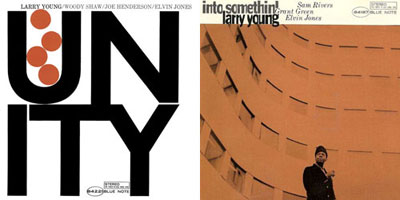 When I would sit around at home and, using my imagination, play through chordal sounds like this, I would always sing the top note to myself - even if I was not a great singer by any stretch of the imagination. I think that it was doing this very thing, almost like a form of auditory visualization, that helped me to make the top voice speak a little more than the other notes. I am not doing anything specific to play harder with my 3rd finger. So, with this in mind, let's move ahead When I would sit around at home and, using my imagination, play through chordal sounds like this, I would always sing the top note to myself - even if I was not a great singer by any stretch of the imagination. I think that it was doing this very thing, almost like a form of auditory visualization, that helped me to make the top voice speak a little more than the other notes. I am not doing anything specific to play harder with my 3rd finger. So, with this in mind, let's move aheadAs the linear stabs with chordal punctuations conclude around bar 134, there's a nice touch of playing A/Bb to resolve to Bbmaj7(9/6) in bar 136. Here, I am just ignoring the G7(alt.) chord - even if the bass is playing it! Perhaps the most direct chordal reference to Chick is over the Bbmaj7 from the end of bar 140 through 142. Notice that, even with chords, I am bringing G7(alt.) into focus a bar earlier than the bass arrival. From bars 145 through 150, this passage is really drawing upon the seminal influence of McCoy Tyner, with some Chick thrown in for good measure. In bars 151 through 160, you have an episode that is almost done completely with triad superimpositions over the same very basic ii-V-I-VI chord progression. This was an approach that I lifted from Chick Corea. Notice the beauty of using a D/Bb in bar 151 - here again, I am just ignoring the G7(alt.) chord, and playing as if the whole 4 bars was Bbmaj7. In bars 155-156 over F7, I am using those same triads Dmaj-Ebmaj-Fmaj which give you a feeling of being somewhere between F9sus and F7(13b9). I hear all of these sounds as beautifully majestic harmonic colors. When the chords resolve to Bbmaj7 in bar 157, I superimpose both D/Bb to A/Bb, and eventually resolve to Bbmaj7(9/6), a very lush sonority. In bar 159, I apply G/Bb - and that B-natural, on the inside of that chord, is eventually going to work its way to find resolution on a C-natural (up a 1/2-step) within a Gsus chord. In bar 161, as this episode is winding down, the influences are somewhere between McCoy, Chick and the great organist Larry Young. The inner voice movement of the 3-note chords in bars 162 and 164 are right out of Larry's style of playing, which can be heard on albums like: "UNITY"(Blue Note)(1965) and "INTO SOMETHIN'(Blue Note)(1964), as well as his performances recording with guitarist Grant Green. When we finally resolve to Bbmaj7 in bar 165, there's a really nice long sonority with Bbmaj9/6. I think that, for better or worse, this was the longest breath, or usage of space, during the entire solo adventure. What a relief! With a final Cm7(sus) chord on beat 1 of bar 169, we are working our way towards the eventual fade. I begin by playing in C Dorian with the now familiar ornament on beat 3 of bar 170. This is followed by taking a fragment of that same type of line, and then play it up a 1/2-step putting me in C# Dorian [C#, D#, E, F#, G#, A#, B], eventually resolving to Bbmaj7 in bar 173. In bars 175-176, anticipating the coming G7(alt.), I am already using Db dominant 7th pentatonic with some chromaticism to land on G-natural on beat 1 of bar 177. From there, I ascend via C Dorian, but when I hit Eb, I turn that same note into a D#, and descend through B dominant 7th pentatonic which, on the way down, crosses over into being F altered dominant landing us back in the consonant realm of Bbmaj7. In that moment, in bar 182, I ascend through the chord using an F major triad and then a D minor triad which bring out the lush chord tones. In closing, in bars 183-184 I play through the G7(alt.), using that very altered dominant scale with chromaticism, but employing it all a bar earlier than the actual arrival by the bass. 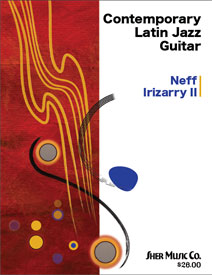 The rest of Neff's transcription, and I don't know how he heard this stuff, as it is pretty inaudible with the fade now way down in level, we'll have to take his word for those notes. The rest of Neff's transcription, and I don't know how he heard this stuff, as it is pretty inaudible with the fade now way down in level, we'll have to take his word for those notes.This brings us to a discussion of Neff's master's thesis, now a published book, "CONTEMPORARY LATIN JAZZ GUITAR"(Sher Music). All along, as he went through this process, there was no question that this was going to be a most serious and scholarly work. It was a great honor for me to have been included in this volume. Having Neff's transcription of "Gracinha" - which, if it needs to be noted, was named for Sergio Méndes' muse and lead vocal voice for all of these decades, the great Gracinha Leporace, who is, for me, one of the great, great voices of Brasil. Her sense of phrasing and enunciation is just other worldly, and I could listen to her sing all day and night. As usual, coming up with titles for instrumentals is the last thing that is on one's mind, especially for a tune that's not really a fully realized composition, one that is only going to end-up in an educational book. So even though the piece involves Latin/Salsa rhythms and attitudes, I can't explain why I chose to name it for this fantastic Brasilian vocalist, but, that's what I did - and here we are. It's O.K. to laugh - I'm laughing at myself! In truth, I really don't receive too many complaints about the website and the music that I have offered here, but from the initial launch, I have never sought to charge anything for the lead sheets and transcriptions - and, if I do receive an occasional critique, it is always from someone wishing that I would present the transcription as pdfs, using Finale or Sibelius. This as opposed to doing the work by hand - which I really do enjoy very much. Of course, sometimes people do not enjoy sifting through my occasionally squished in accidentals - especially my funky natural signs. So, for those of you who have whined about this, now you get your wish, an actual pdf, because that's how Neff Irizarry did it. As Neff readied this wonderful material for publication, one of the last steps and considerations becomes the question from the publisher, IF they even bother to ask the author, and that is this: 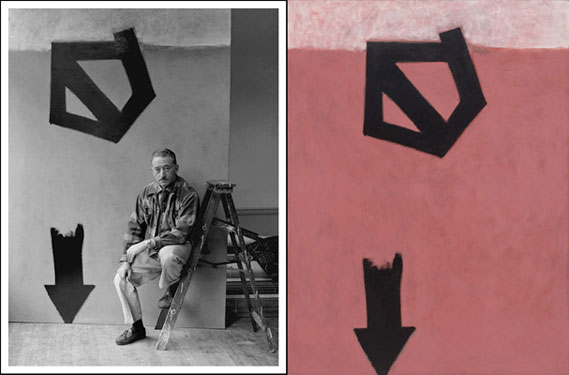 "Any thoughts about what kind of cover you would like?" After Neff had tried to answer that question for Chuck Sher and his graphic designer, Neff wrote to me and asked me about what I thought of the first test cover that they had presented to him. And so, this took me on yet another great journey, and I have written about that process, even if I was a complete and total outsider in an essay filled with lots of images to enhance the storytelling. I have called this piece, now an essay, "THE EVOLUTION OF A BOOK COVER." During this wild process, at least for me, while trying to help Neff communicate better and get an artistic look for his first book, by pure cosmic chance, I became re-engaged with the magnificent work of the abstract-expressionist artist, Adolph Gottlieb(March 14th, 1903-March 4th, 1974). Specifically, it was his masterpiece, "Azimuth"(1965) that put me on his trail again. I can't begin to tell you all how very inspiring it was to immerse myself in his work again. When I see the body of work of a great artist like this, the output alone becomes so humbling that it has a way of helping you to define where you are, where you have been, and every small step along your own particular journey in the arts. I hope that some of you will take advantage of this offering, and will visit that page, via the link supplied here, and will then find your own emotional connection with the work of this great master. "Any thoughts about what kind of cover you would like?" After Neff had tried to answer that question for Chuck Sher and his graphic designer, Neff wrote to me and asked me about what I thought of the first test cover that they had presented to him. And so, this took me on yet another great journey, and I have written about that process, even if I was a complete and total outsider in an essay filled with lots of images to enhance the storytelling. I have called this piece, now an essay, "THE EVOLUTION OF A BOOK COVER." During this wild process, at least for me, while trying to help Neff communicate better and get an artistic look for his first book, by pure cosmic chance, I became re-engaged with the magnificent work of the abstract-expressionist artist, Adolph Gottlieb(March 14th, 1903-March 4th, 1974). Specifically, it was his masterpiece, "Azimuth"(1965) that put me on his trail again. I can't begin to tell you all how very inspiring it was to immerse myself in his work again. When I see the body of work of a great artist like this, the output alone becomes so humbling that it has a way of helping you to define where you are, where you have been, and every small step along your own particular journey in the arts. I hope that some of you will take advantage of this offering, and will visit that page, via the link supplied here, and will then find your own emotional connection with the work of this great master.As was mentioned at the beginning of this analysis, "Gracinha" went on to become, some 4 years later, "Charanga Sí, Sí" via the Caribbean Jazz Project. In order to turn an improvised piece into a more fully realized composition, it required extracting the best parts "Gracinha" and better organizing them. So, the 1st 32 bars of "Gracinha" did remain as 32 bars, but with very specific phrasing for guitar and vibes. At bar 17 of this [I] section, Dave Valentín joins us with his beautiful flute sound. When the new [A] arrives, it does resemble in many key aspects what you heard in bars 33-48 in Neff's transcription. Once again, most of it is stated by the guitar and vibes, the flute only rejoins us at bar 17 for a new section, which was labeled as [A2]. From that point forward, you really have a completely new and far more evolved piece of music which was to include 3 separate solo sections, one each for guitar, vibes and flute. Perhaps the most fun part was seeing a montuno section, influenced by the masterful Oscar Hernández, become a vocal/coro with hastily written lyrics, which were sung by: conguero Richie Flores, Dave Valentín, bassist John Benitez, and our special guest, Caridad Canelón - who, in case you hadn't figured it out, she is the C.C. of the "Sí, Sí" in the song title. And there you have it. Addendum: It is with a very heavy heart that I am using this space to acknowledge the passing of a great drummer and a good friend, Mike Shapiro. Mike was known to many, from coast to coast and around the world, as one of the foremost authorities on Brasilian rhythms and music - especially for non-Brasilians. He spent years playing with Sergio Méndes and, in addition, he was one of the founders and principal instructors at L.A.M.A. (Los Angeles Music Academy). Mike played on one of my all-time favorite albums by Sergio, "BRASILEIRO"(Elektra) which still stands as one of the great albums, in any genre! I would also have to mention two albums by the brilliant Dori Caymmi, "BRASILIAN SERENATA"(Qwest)(1991) and "KICKING CANS"(Qwest)(1993). I just love these albums, the songs and the feeling. Mike Shapiro was a huge part of that. Saxophonist and best friend Gary Meek wrote the following anecdote in his homage: "Mike learned Brasilian drumming and percussion from Airto Moreira by setting-up two drum sets, facing each other, at Airto's house and imitating him precisely. It wasn't long before he was the best American player of Brasilian music. All of the great Brasilian artists wanted him, because of his unmatched feel and understanding of so many different styles of Brasilian music." Back in 2010-11, I sought Mike out to see if he could possibly help me to get Gracinha Leporace to sing some vocalese on my song "Zancudoville" which was to appear on my album, "PARTING SHOT"(Tone Center). Mike and I tried, using all of our persuasive powers, even begging, but, in the end, all of our efforts failed. 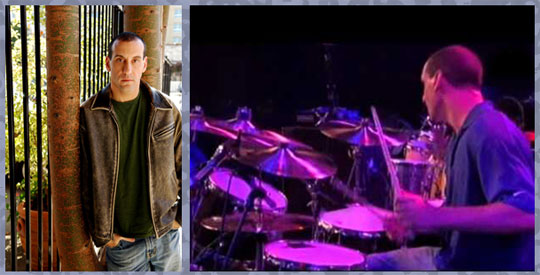 For me, it was such a huge disappointment, but one must move on and let it go. However, I was always indebted to Mike for the sincerity of his efforts. We stayed good friends thereafter, and when Sergio would come to New York to play the Blue Note, Mike and I would always meet for lunch or dinner. Those meals were always great fun. For me, it was such a huge disappointment, but one must move on and let it go. However, I was always indebted to Mike for the sincerity of his efforts. We stayed good friends thereafter, and when Sergio would come to New York to play the Blue Note, Mike and I would always meet for lunch or dinner. Those meals were always great fun.It is strange how the years can pass by so quickly, and it was in 2015-16 that I was able to repay the favor to Mike by recommending him to Brent Fischer to play on the Clare Fischer Big Band album, "OUT OF THE BLUE." Both Brent and Mike were exceptionally pleased with the results. For me, I was just thrilled that I could have made this connection, and in doing so, make two good friends happy, personally and musically. This past Sunday, November 14th, 2021, I happened to read at a friend's Facebook page that Mike had passed away in the Philippines. Again, some 5 years had passed, and I had no idea that Mike had even moved to the Philippines. And, more than this, that he had recently married singer, Katrina Velarde. All of this was surprising and shocking news to me - though, had I known about the move and the marriage, I certainly would have wished Mike well, and Katrina & Mike well too. I can't pretend that I knew Mike well or that he and I were "close" friends - but, in the way that musicians often form bonds of friendship with one another, Mike and I were certainly, at the very least, in that place. As I knew him, he was a great person and obviously a great and very knowledgable musician - especially in his area of specialty, Brasil. As it is for all of us, none of us are perfect human beings by any stretch of the imagination, Mike had his flaws and demons too but, that aside, the outpouring of love and sorrow from his friends and colleagues, near and far, brought about by these recent tragic events - that says enough! In the end, he was a beloved person by many. I am just so sad and sorry that his life took this very unexpected turn - at least as many of us are now perceiving it. So, dear Mike, I hope that in the greater cosmos this somehow finds you at peace, or that peace is coming to you very soon. Sending love to you and your family and all those who cared so much for and about you. Your friend, Steve. |